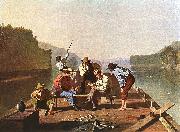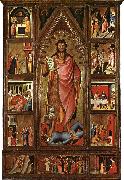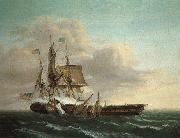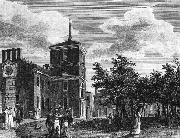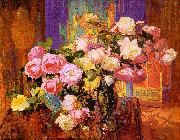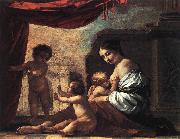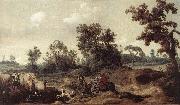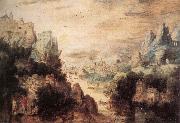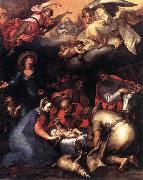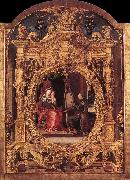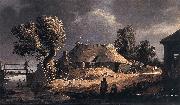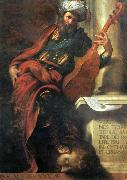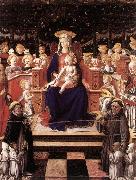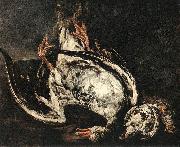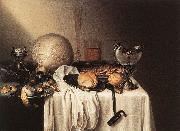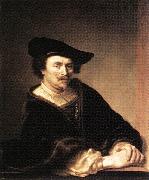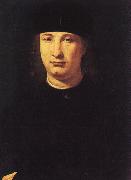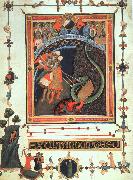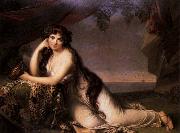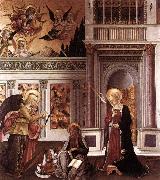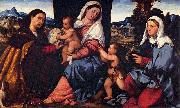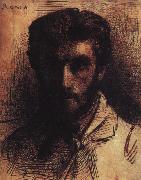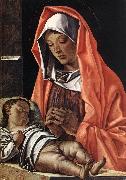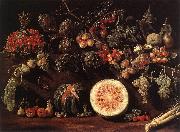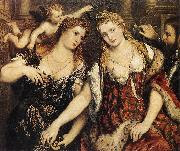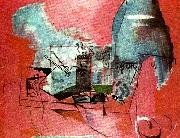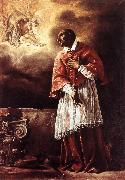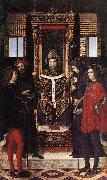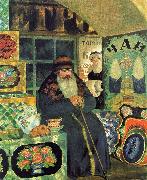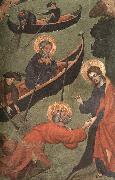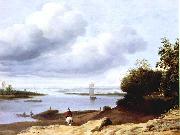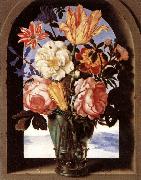|
|
|
|
|
|
|
|
|
|
|
|
|
|
 |
Blake, William
|
|
William Blake was an English poet, painter was born November 28, 1757, in London |
|
|
|
|
|
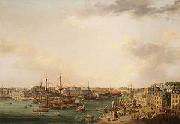 |
Blarenberghe
|
|
was the name of a dynasty of painters, originally from French Flanders but the most famous descendants lived in Lille and Paris in France. They were all descendants from Joris van Blarenberghe (1612-1670).
The first two painters were Hendrick van Blarenberghe (1646-1712) and his son Jacques-Guillaume van Blarenberghe (1679-1742). Their style was still heavily influenced by the Flemish Baroque style. Jacques-Guillaume had two painting sons, Louis-Nicolas Van Blarenberghe (15 July 1716 - 1 May 1794) and Henri Desire van Blarenberghe (1734-1812).
Louis-Nicolas had a son who was also a painter and with who he often collaborated: Henri-Joseph van Blarenberghe (24 November 1750 - 1 December 1826). Together with his father, they stayed at the Palace of Versailles, where they worked as miniaturists for the high society of their day. They were especially famous for their paintings on snuff boxes. Louis-Nicolas also worked as official campaign painter of the French court, following the French army as a war reporter. Two of his daughters, Catherine-Henriette and Isabelle, were chamber maids to the children of the French kings. The works of Louis-Nicolas and Henri-Joseph were collected in profusion in the 19th century by the Rothschild family. There is a collection of their work on public display at Waddesdon Manor.
Henri-Joseph painted, besides the miniatures, mainly Panoramic paintings, often in gouache. The subjects were, as with his father, often military, and also included the French revolution. |
|
|
|
|
|
|
|
|
|
|
|
|
|
|
|
|
|
|
|
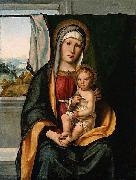 |
Boccaccio Boccaccino
|
|
(c. 1467 - c. 1525) was a painter of the early Italian Renaissance, belonging to the Emilian school. He is profiled in Vasari's Le Vite delle pie eccellenti pittori, scultori, ed architettori (or, in English, Lives of the Most Excellent Painters, Sculptors, and Architects).
He was born in Ferrara and studied there, probably under Domenico Panetti. Few facts of his life are known. His principal artistic activity was in Venice, Ferrara, and especially in Cremona, where he founded a school in which Garofalo was a pupil.
His most celebrated achievement is the frescoes in the Cathedral of Cremona (1506-1519) representing the Birth of the Virgin and some subjects from her life. His position there was taken over by Altobello Melone. His remaining works, which include the Marriage of Saint Catherine (Accademia), the Virgin and Child with Four Saints (Venice, San Giuliano), the Virgin and Two Saints (Cremona, San Quirilo), and the Holy Family (Paris, Louvre), are considered by Lanzi remarkable for richness of drapery, variety of color, spirit and grace of attitude, and harmony of landscape. Several works formerly attributed to Pietro Perugino, Pinturicchio, and Garofalo are now ascribed to Boccaccino.
His son and pupil Camillo Boccaccino (1501-46) was a painter at Cremona.
|
|
|
|
|
|
|
|
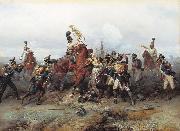 |
Bogdan Villevalde
|
|
painted Feat of Cavalry Regiment at the battle of Austerlitz in 1805. |
|
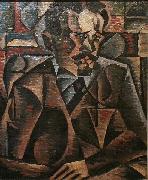 |
Bohumil Kubista
|
|
(1884 - 1918) was a Czech painter and art critic, one of the founders of Czech modern painting. He studied at the School of Applied Arts in Prague, but left in 1906 to study at the Reale Istituto di Belle Arti in Florence. He, Emil Filla, Antonin Prochezka, and five others founded Osma (The Eight), an Expressionist-oriented group of artists.
Kubišta came to his individual expression gradually, at first he was influenced by the work of Vincent van Gogh and Paul Cezanne. He educated himself in in philosophy and optics, and studied colour and the geometrical construction of painting.
Kubišta, like several other Czech artists of his generation, was strongly affected by the 1905 Edvard Munch exhibition in Prague. Together with Emil Filla he established the artistic group Osma in 1907. He worked in an Expressionist style until 1910, and exchanged ideas with German painters in Die Bre - ke. He also developed visual ideas learned from the work of Cezanne. His later style (approximately from 1911) was strongly influenced by cubism and expressionism. Expressionist elements, particularly his use of color but also his subject matter, immediately distinguish Kubištaes cubist work from that of founding Paris Cubists Picasso and Braque. He studied color theory, analyzing the harmonic and compositional principles of painters such as El Greco, Eugene Delacroix, Vincent van Gogh, and Edvard Munch. He also paid close attention to mathematical and geometric principles. Around 1911, he became acquainted with Jan Zrzavý and the artistic group Sursum.
He died prematurely during the global 1918 flu pandemic which ravaged Europe after the First World War.
|
|
|
|
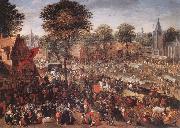 |
BOL, Hans
|
|
Flemish Northern Renaissance Painter, 1534-1593 |
|
 |
BOLLONGIER, Hans
|
|
Dutch painter, Haarlem school (b. ca. 1600, Haarlem, d. ca. 1675, Haarlem) |
|
|
|
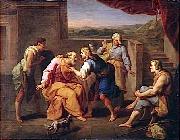 |
Bon Boullogne
|
|
(bapt. February 22, 1649 - May 17, 1717) was a French painter.
Boullogne was born in Paris, a son of the painter Louis Boullogne;[1] he was regarded as the most gifted of his children. He took his first lessons from his father, whom he is thought to have assisted in the Grande Galerie of the Louvre. Through his father, who presented a half-length figure of St John by Bon to Jean-Baptiste Colbert, Contrôleur General des Finances, he was sent to the Academie de France in Rome as a Pensionnaire du Roi. In this capacity, he made copies of famous works, in particular some frescoes by Raphael in the Vatican Loggie, intended for reproduction as Gobelins tapestries. The period he then spent in Lombardy helped to complete his training. He studied the work of Antonio da Correggio and the Annibale Carracci, as well as Guido Reni, Domenichino and Francesco Albani. Bones painting, especially the mythological work, shows great affinities with the work of the Bolognese school, which was also to be found in the royal collections. Also of influence to Bon was Nordic art, as demonstrated in his female portraits framed by plant like motifs, a device taken up by his pupil Robert Tournieres. He died in Paris.
|
|
|
|
 |
Bonaventura Peeters
|
|
(Antwerp, 23 July 1614 - Hoboken (Antwerp), 25 July 1652) was a Flemish Baroque painter who specialized in seascapes and shipwrecks, known as Zeekens (small seascapes).
Peeters, brother of the seascape painters Jan Peeters I, Gillis Peeters, and Catharina Peeters, learned to paint from his father, who became a master in Antwerp's guild of St. Luke in 1607 - 1608, and his earlier works are related to the tonal phase of Dutch landscape painting. Later paintings, however, reflect the stronger colors of Italianate classicism. This shift follows the general changes in artistic style at the time. Like his brother Jan, dramatic shipwrecks with dark billowy clouds, form a significant part of his oeuvre, as do serene ports and "portraits" of ships.Also, while many of Peeters's paintings reflect actual locations, and he may have even travelled along the coast of Scandinavia, his many views of far-away Mediterranean and Middle Eastern ports reflect a growing taste for the exotic and are probably inspired from fantasy and from prints. This tradition developed simultaneously in Flemish painting and in Dutch Golden Age painting, with many artists, including Peeters, working in both Antwerp and in the Dutch Republic. |
|
|
|
|
|
|
|
|
|
|
|
|
|
|
|
|
|
|
|
|
|
|
|
|
|
|
|
|
|
|
|
|
|
|
|
|
|
|








